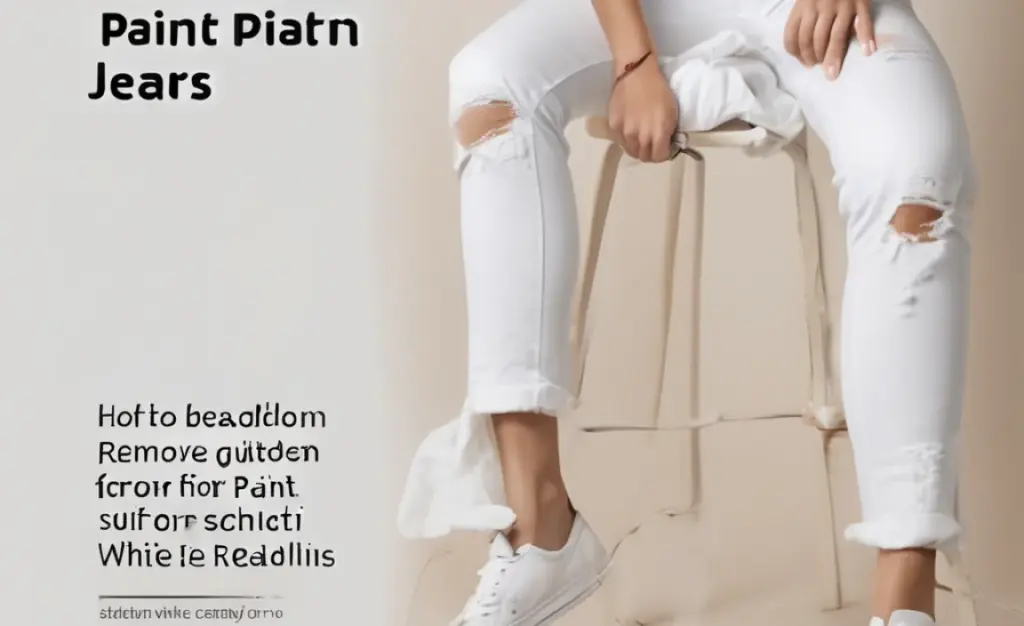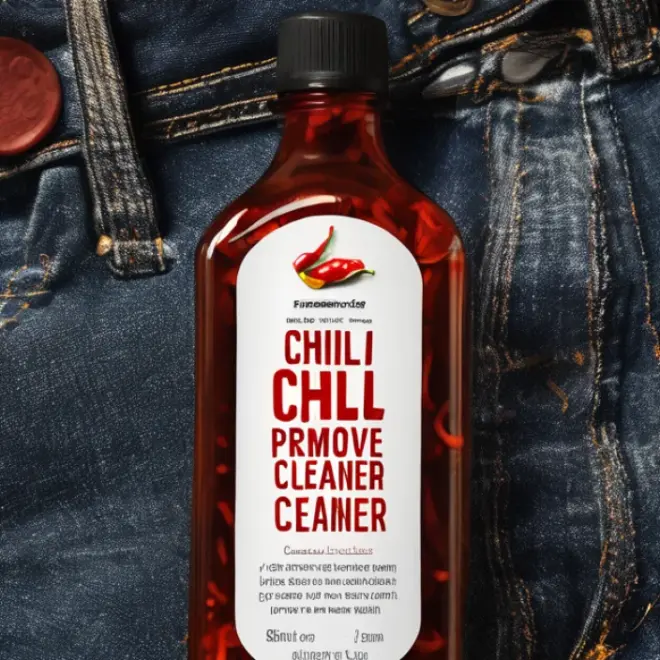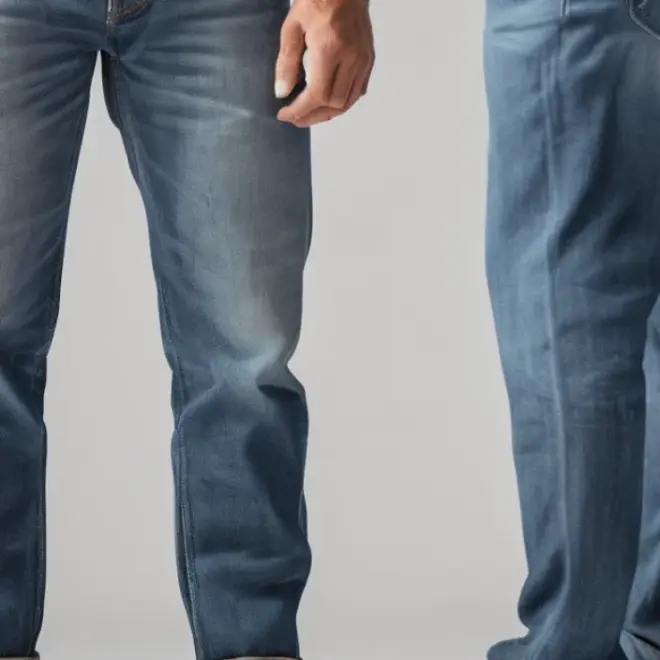Quick Summary: Effectively remove paint from white jeans by acting fast. For fresh stains, blot immediately with a clean cloth. For dried-on paint, soaking in a suitable solvent like rubbing alcohol or a commercial paint remover, followed by washing, is usually the most efficient method. Always test on an inconspicuous area first.
Oh, the dreaded paint splatters on your favorite white jeans! It happens to the best of us, whether you’re painting a room, enjoying a craft project, or simply caught in an unexpected artistic downpour. The good news is that a good dollop of paint on white denim doesn’t have to mean the end of your beloved jeans. With the right approach and a little patience, you can often rescue them from these colorful accidents.
This guide is here to take the worry out of paint stains. We’ll walk you through simple, effective methods to tackle paint, from freshly dropped blobs to dried-on marks. You’ll learn exactly what you need and the best way to use it. Let’s get those white jeans looking pristine again, step-by-step!
Understanding Paint Stains on Denim

White jeans offer a blank canvas, which sadly makes them magnets for paint stains. The type of paint and how long it’s been on the fabric are the biggest factors determining how easy it will be to remove. Water-based paints, like latex or acrylic, are generally easier to deal with than oil-based paints or permanent markers. The key to successful stain removal is often acting quickly before the paint has a chance to set deep into the fabric fibers.
Once paint dries, it forms a hardened layer that can bond with the denim. This makes it more stubborn. However, don’t despair. Many common household items and readily available cleaning solutions can break down various paint types, allowing you to lift them away. The process is less about harsh scrubbing and more about choosing the right solvent for the job and applying it correctly.
Types of Paint and Their Challenges
Different paint formulations require different removal strategies. Understanding the paint type will help you select the most effective method.
- Water-Based Latex/Acrylic Paint: These are common for home painting. Fresh spills can often be rinsed with water. Dried acrylic paint can sometimes be softened with rubbing alcohol or diluted vinegar.
- Oil-Based Paint: These are more challenging. They typically require stronger solvents like mineral spirits or turpentine. Always use these in a well-ventilated area.
- Fabric Paint/Spray Paint: These are designed to adhere to fabric, making them particularly difficult to remove if dried. Specialized removers or strong solvents might be necessary.
- Enamel Paint: Similar to oil-based paints, these are often resin-based and require potent solvents.
Essential Tools and Supplies

Before you start, gather these items. Having everything ready will make the process smoother and more effective.
- Clean white cloths or paper towels (plenty of them!)
- Cotton balls or swabs
- A soft-bristled brush (an old toothbrush works well)
- Rubbing alcohol (isopropyl alcohol)
- Mild dish soap
- White vinegar
- Water
- A small bowl or container
- Gloves (especially for stronger solvents)
- A drop cloth or old newspaper to protect your work surface
- For tougher stains: Commercial paint remover (follow product instructions carefully)
- For water-based paints: Hairspray (some contain alcohol)
Step-by-Step Guide to Removing Paint Stains
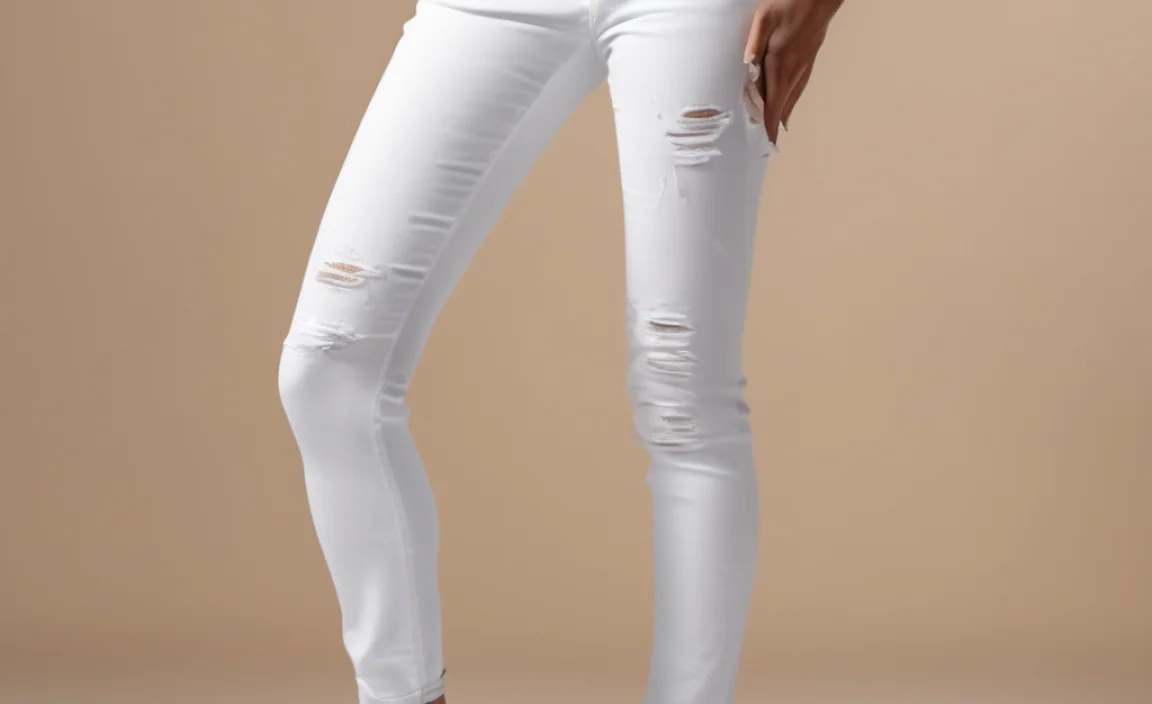
This guide covers common scenarios, from fresh splatters to dried-on messes. Remember to always test any cleaning solution on an inconspicuous area of the jeans first, such as an inside seam or hem, to ensure it doesn’t damage the fabric or color.
Method 1: For Fresh Paint Splatters (Especially Water-Based)
The golden rule for fresh paint stains: act fast!
- Blot Immediately: As soon as the paint lands, take a clean white cloth or paper towel and gently blot the stain. Do NOT rub, as this can spread the paint and push it deeper into the fibers. Lift as much of the wet paint as possible.
- Rinse with Cold Water: If it’s water-based paint, gently flush the stained area from the back of the fabric with cold running water. This helps push the paint out of the fibers.
- Dish Soap Treatment: Apply a small amount of mild dish soap directly to the stain. Gently work it into the fabric with your fingers or a soft brush. Let it sit for 5-10 minutes.
- Rinse and Repeat: Rinse the area thoroughly with cold water. If any color remains, repeat steps 3 and 4.
- Launder as Usual: Once the stain appears gone, wash the jeans according to their care label, preferably in cold water. Air dry them initially to ensure the stain is completely out before applying heat from a dryer, which can set any remaining marks.
Method 2: For Dried Water-Based Paint (Acrylic, Latex)
Dried water-based paint can be stubborn but is often removable.
- Prepare the Area: Lay the jeans flat on a protected surface. Place a clean cloth or paper towels underneath the stained area to absorb any excess liquid.
- Apply Rubbing Alcohol: Dampen a clean cloth or cotton ball with rubbing alcohol (isopropyl alcohol). You can also use hairspray if it contains a high percentage of alcohol, though rubbing alcohol is generally more effective.
- Blot and Scrape: Gently blot the dried paint stain with the alcohol-soaked cloth. For thicker paint, you might be able to gently scrape some of the dried paint off with a dull knife or credit card before applying the alcohol. Work from the outside of the stain inward to avoid spreading.
- Let it Sit: Allow the rubbing alcohol to sit on the stain for a few minutes to help break down the paint.
- Work it Out: Use a soft-bristled brush (like an old toothbrush) to gently scrub the area. You should see the paint start to loosen and lift. Continue blotting with clean sections of the alcohol-soaked cloth.
- Rinse: Once you’ve removed as much paint as possible, rinse the area thoroughly with cold water.
- Dish Soap: Apply a drop of mild dish soap and gently rub it in. Let it sit for 5 minutes.
- Wash and Check: Launder the jeans as usual in cold water. Air dry to ensure the stain is gone. If traces remain, repeat the process.
Method 3: For Dried Oil-Based Paint
Oil-based paints require stronger solvents. Always use these in a well-ventilated area and wear gloves.
Option A: Using Commercial Paint Remover
Many products are designed specifically for paint removal from fabric. Always follow the manufacturer’s instructions precisely.
- Choose a Remover: Select a solvent-based paint remover suitable for fabrics. Some are general-purpose, while others are specifically for oil-based paints. Check product reviews for effectiveness on denim. A reputable option to consider is a product like Goo Gone or a more targeted paint stripper if needed, though caution is advised with harsher chemicals.
- Protect Your Workspace: Lay out old newspapers or a drop cloth. Ensure good ventilation.
- Test First: Apply a tiny amount of the remover to an inside seam of the jeans to check for colorfastness and fabric damage. Let it sit for a few minutes, then rinse and check.
- Apply Remover: Moisten a clean cloth or cotton ball with the paint remover. For dried paint, you may need to carefully use a dull knife to break up the surface layer first.
- Blot and Work: Gently blot the stain with the remover. Work from the outside in. As the paint begins to soften, use a soft brush to gently agitate the area.
- Lift the Paint: Continue blotting with clean parts of the cloth until as much paint as possible is lifted. This may take time and repeated applications.
- Rinse Thoroughly: Once the paint is mostly gone, rinse the spotted area with plenty of water.
- Dish Soap: Apply a small amount of dish soap to clean any residue from the remover and the remaining paint. Gently rub.
- Final Wash: Wash the jeans in cold water with your usual detergent, and air dry to check the results.
Option B: Using Mineral Spirits or Turpentine (Use with Caution)
These are potent solvents and should be used sparingly and carefully.
- Ventilation is Key: Work in a well-ventilated area or outdoors. Wear gloves to protect your skin.
- Protect the Area: Place old towels or newspapers beneath the stained section.
- Test on an Inconspicuous Area: As always, test a small patch first.
- Apply Solvent: Dip a cotton ball or cloth in mineral spirits or turpentine. Gently blot the paint stain.
- Patience and Gentle Scraping: For dried, thick paint, you might gently scrape away excess with a dull edge before applying the solvent. Then, continue blotting. The solvent will help to loosen and dissolve the oil-based paint.
- Work it Out: Use a soft brush to gently work the loosened paint away. Replace the blotting cloth frequently as it picks up the dissolved paint.
- Rinse and Soak: Once the bulk of the paint is gone, rinse the area thoroughly. You may then want to soak the stained area in a solution of warm water and dish soap for about 30 minutes.
- Wash and Air Dry: Wash the jeans in cold water with your regular detergent. Air dry. Repeat if necessary.
Special Considerations for Tough Stains

Some paint types, like spray paint or certain enamels, can be extremely difficult to remove from denim, especially if left to dry for an extended period.
- Pre-Soaking: For very stubborn dried stains, soaking the jeans for a few hours (or even overnight) in a solution of warm water and a strong laundry detergent or a specialized stain remover can help soften the paint before you begin treatment.
- Household Ammonia: For some water-based paints, a dilute ammonia solution (one part ammonia to two parts water) can be effective. Never mix ammonia with bleach, as it creates toxic fumes. Test this in a discreet area.
- Nail Polish Remover (Acetone): In a pinch, acetone-based nail polish remover can sometimes work on small, dried paint specks, particularly for acrylic paints. Use sparingly on a cotton swab and blot, then rinse thoroughly and use dish soap before washing. Be aware it can affect fabric dyes if not used carefully.
- Consider Professional Cleaning: For very precious or expensive white jeans, or for stains that resist all home methods, consider taking them to a professional dry cleaner. They have access to specialized solvents and techniques.
Preventing Paint Stains in the Future
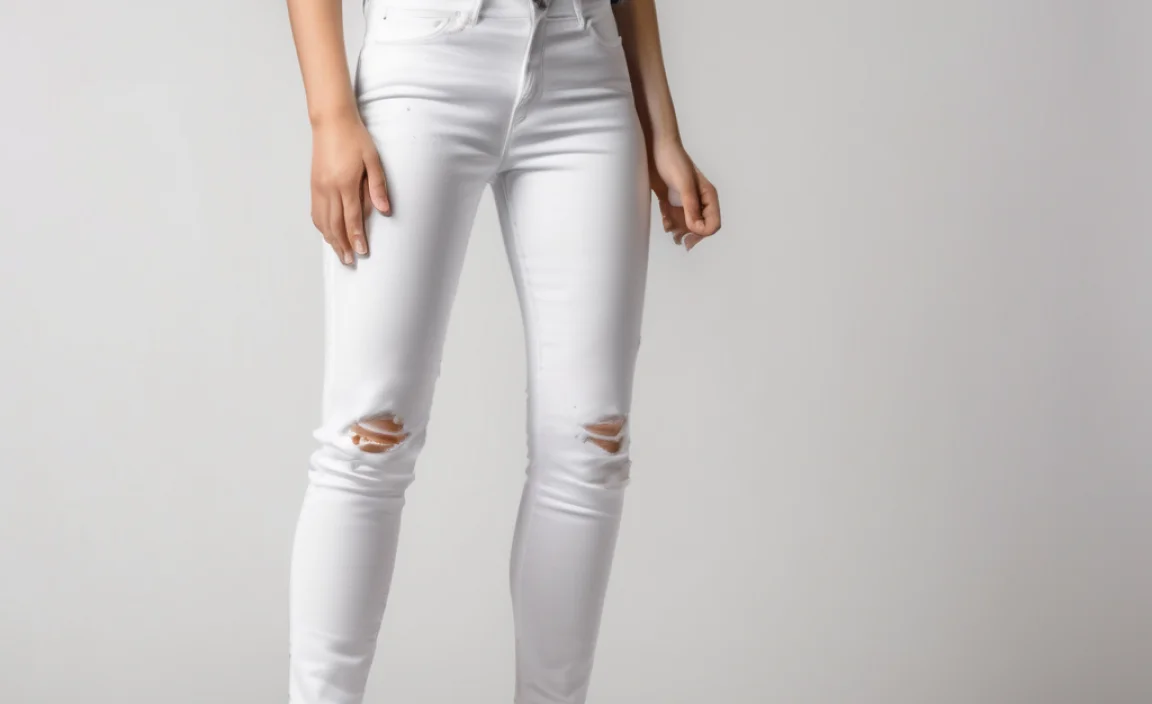
The best way to deal with paint stains is to avoid them! Here are a few tips:
- Wear Old Clothes: When painting or engaging in messy activities, always opt for old clothes you don’t mind getting dirty.
- Cover Up: Consider wearing an apron or a large old shirt over your clothes.
- Protect Your Work Area: Use drop cloths or old newspapers when painting to prevent accidental splatters.
- Keep a “Stain Kit” Handy: For crafters or DIY enthusiasts, keep a small kit with a spray bottle of water, a clean cloth, and a small bottle of rubbing alcohol or stain remover near your workspace. This allows for immediate action if a spill occurs.
Table: Common Paint Types and Removal Approaches
This table provides a quick reference for tackling different paint stains on your white jeans.
| Paint Type | Fresh Stain Approach | Dried Stain Approach | Notes |
|---|---|---|---|
| Water-Based (Latex, Acrylic) | Blot, Rinse with cold water, Dish soap | Rubbing alcohol, Soft brush, Dish soap, then wash | Generally easier to remove. Act quickly! |
| Oil-Based | Blot excess, apply solvent (mineral spirits) with cloth, Dish soap, then wash | Commercial paint remover, mineral spirits, turpentine. Use in well-ventilated area. | Requires stronger solvents. Test carefully. |
| Fabric Paint/Spray Paint | Blot immediately, try cold water and dish soap carefully | Very difficult if dried. May require specialized removers or professional cleaning. | Designed to adhere; act fast. |
| Enamel Paint | Blot excess, apply solvent carefully | Strong solvents like mineral spirits or commercial removers. | Similar to oil-based paints, can be tough. |
Frequently Asked Questions
Q1: Will rubbing alcohol damage my white jeans?
Generally, rubbing alcohol is safe for white denim. However, it’s always best practice to test it on an inconspicuous area first to ensure no adverse reactions occur with the fabric or any potential pre-treatments.
Q2: How long should I let the solvent sit on the stain?
For most common household solvents like rubbing alcohol, letting it sit for 5-10 minutes is usually sufficient to start breaking down the paint. For stronger commercial removers, follow the product’s instructions, as dwell times can vary.
Q3: Can I put my jeans in the dryer after trying to remove paint?
Absolutely not, until you are certain the stain is completely gone. Heat from the dryer can permanently set any remaining paint residue into the fabric fibers, making it nearly impossible to remove later.
Q4: What if the paint is on a decorative part of the jeans?
Be extra cautious. Decorative elements like embroidery, beads, or patches may be damaged by solvents. If possible, try to treat only the denim fibers surrounding the decoration, or use very gentle methods like blotting with a damp cloth. For valuable embellished items, professional cleaning might be the safest route.
Q5: My jeans have a slight yellow tint after using a solvent. What happened?
Some solvents, particularly if left on too long or if the fabric is old, can cause a slight discoloration. This is more common on synthetics or aged cotton. Rinsing thoroughly and washing with a good detergent, perhaps one with optical brighteners, can sometimes help. If it’s significant, a color-safe bleach might be considered, but always test first.
Q6: How quickly do I need to treat a paint stain?
The sooner, the better! Fresh paint stains, especially water-based ones, are significantly easier to remove than dried, set-in stains. Even for oil-based paints, immediate blotting can remove a substantial amount of excess before it starts to harden.
Conclusion
Paint spills on white jeans can feel like a fashion emergency, but they don’t have to be a disaster. By understanding the type of paint and employing the right techniques, you can effectively remove most paint stains without harming your favorite denim. Remember to always act swiftly, test your chosen method on a hidden area, and be patient. With the steps outlined in this guide, you’re well-equipped to tackle those unexpected splatters and keep your white jeans looking their best for any occasion. Happy cleaning!


